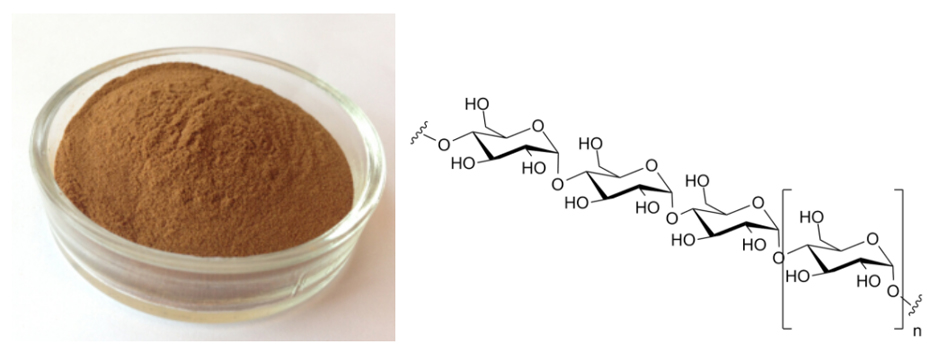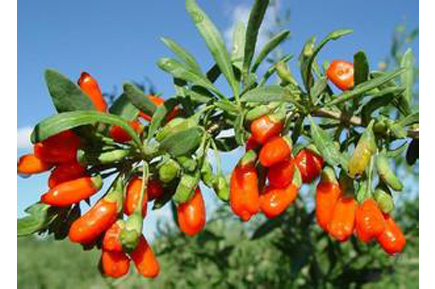Factory Price For Wolfberry Extract in Mauritius
Factory Price For Wolfberry Extract in Mauritius Detail:
[Latin Name] Lycium barbarum L.
[Plant Source]from China
[Specifications]20%-90%Polysaccharide
[Appearance] Reddish brown powder
Plant Part Used:Fruit
[Particle size] 80 Mesh
[Loss on drying] ≤5.0%
[Heavy Metal] ≤10PPM
[Shelf life] 24 Months
[Package] Packed in paper-drums and two plastic-bags inside.
[Net weight] 25kgs/drum
Product Description
The wolfberry is harvested when the fruit is orange red. After drying to the skin wrinkles, it is exposured to the skin moist and soft fruit, then removed the stem. Wolfberry is a kind of rare traditional Chinese medicine which is very rich in nutrients and has high medicinal value The materials contain not only such as iron, phosphorus, calcium, but also a lot of sugar, fat and protein. It also contains polysaccharide with good health care function to human body and organic germanium that is beneficial to human’s intelligence.
Function
1. With the function of regulating immune, inhibiting tumor growth and cell mutation;
2. With the function of lipid-lowering and anti-fatty liver;
3. Promoting the function of hematopoietic;
4. With the function of anti-tumor and anti-aging.
Applications:
1. Applied in food field, it can be produced into wine, canned, condensed juice and other more nourishment;
2. Applied in health product field , it can be made into suppositories, lotions, injection, tablets, capsules and other dosage forms to regulate immunity;
3. Applied in pharmaceutical field, effectively treating cancer, hypertension, cirrhosis and other diseases;
4. Applied in cosmetics field, it can prevent skin aging and improve skin elasticity.
Product detail pictures:

Related Product Guide:
We have a highly efficient team to deal with inquiries from customers. Our goal is "100% customer satisfaction by our product quality, price & our team service" and enjoy a good reputation among clients. With many factories, we can provide a wide range of Factory Price For Wolfberry Extract in Mauritius , The product will supply to all over the world, such as: New Delhi, Niger, Kazakhstan, With the highest standards of product quality and service, our products have been exported to more than 25 countries like the USA, CANADA, GERMANY, FRANCE, UAE, Malaysia and so on.We are very pleased to serve customers from all over the world!
What is Propolis ? Antiseptic properties. Antibiotic, antibacterial, antifungal & antiviral. Royal Jelly, Bee Pollen. Medicinal marvel from the beehive. Research shows it offers antiseptic, antibiotic, antibacterial, antifungal, and even antiviral properties. Propolis is Nature’s premiere preventive. It is so powerful in action, it is often called Russian penicillin. Propolis is a very sticky substance the consistency of bubble gum from dark to very dark in color. Honey Bees collect resin from certain trees and plants (mostly conifers) to make Propolis. Old beekeepers like me call it bee glue. The bees carry it home like they carry pollen back to the hive but you probably have not read that before. If you consume pollen, you probably have never been told there is Propolis in pollen. It is like gold in a silver mine. You probably have been told, those hard granules in the pollen are due to the pollen having been dried. A lot of those granules could be Propolis. Propolis is hard as steel when it is cool or cold and very very sticky when it is warm. Most people in the states have not even heard the word Propolis let alone know what it is. It is a wonderful product. Spell check in your computer doesn’t even have the word Propolis.
The term “propolis” comes from two Greek words: “pro,” which means “before,” and “polis,” which means “city.” This ancient term came into being centuries ago when some early Greek student of Nature established the fact that honeybees made and used propolis.
Chemically speaking, propolis is a very complex mixture. Its chemical elements vary according to its source. Colors range from golden brown to brownish green to reddish brown to blackish brown. A broad analysis reveals approximately 55 percent resinous compounds and balsam, 30 percent beeswax, 10 percent ethereal and aromatic oils, and 5 percent bee pollen. Many flavonols contribute to propolis. Other components include cinnamic acid, cinnamyl alcohol, vanillin, caffeic acid, tetochrysin, isalpinin, pinocembrin, chrysin, galangin, and ferulic acid.
https://www.lifefxusa.com/
https://www.6minutefacelift.info/enzofx3-skin-care/
https://www.6minutefacelift.info
Because of the important role of oxidative stress in skin ageing, almost every cosmetic now contains some antioxidants. The thing to look for is evidence that these products reduce the effects of UV damage (for example, by reducing the amount of damaged DNA) when used as the manufacturer intends, on the kind of skin it has been developed to protect — not just on the hides of lab mice. Be wary about believing in every marketing claim and ‘miracle in a jar’.
Ensure the products we choose have sufficiently high concentrations of their purported active ingredients (where these are known); if this isn’t stated, ensure the ‘active’ ingredients are listed in the top two-thirds of the ingredient list (preferably, higher). Ingredients listed in the final third of the label list are probably present only in very small quantities.
Only a small number of topical antioxidants have been shown in clinical trials to reduce signs of skin ageing and wrinkles. These include:
• Retinoic acid, also known as tretinoin
• Retinol and retinal (vitamin A)
• Vitamin C
• Polypodium leucotomos fern extract (P. leucotomos)
• Coenzyme Q10 (or Ubiquinione)
• Proanthocyanidins
• Polyphenols
https://www.lifefxusa.com/enzofx3/enzofx3.html
https://www.6minutefacelift.info/
We are a small company that has just started, but we get the company leader's attention and gave us a lot of help. Hope we can make progress together!







